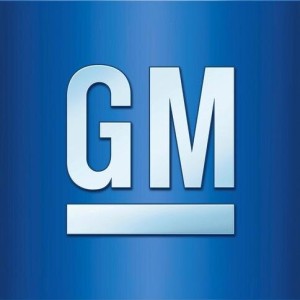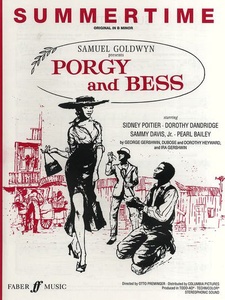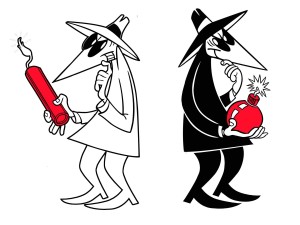How To Avoid Being GM’ed: The Wrongs and Rights of Clients and Lawyers
Reading Time: 7 minutes.

The GM internal-investigation report about ignition-switch problems raises a host of issues, one of which is its unusually sharp criticism of GM internal lawyers. Criticism of lawyers is nothing new, of course. Lawyer-jokes always blame lawyers; lawyers’ spouses frequently blame lawyers; clients sometimes blame lawyers.
But public reports drafted by lawyers infrequently blame lawyers, so this one merits attention, most especially by internal lawyers in large organizations; by the outside counsel who serve them; and by the businesspeople who are the true clients.
What are the key takeaways?
The Normal, Uneasy. Skim the report. (Just skim it — it’s too long to read cover to cover without heroin. If you have heroin, you have other issues besides ignition recalls and attorney ethics). On a practical, professional level, what’s your reaction?
One reaction is, Not much. It is remarkable how normal the actions of GM’s outside counsel and internal lawyers seem, and how characteristic of the operation of large organizations that are at once diffuse, sprawling and “siloed” (to use the term du jour). Anybody who works in or serves a large organization will recognize the course of events, the mis-allocation (or absence) of resources, the personal dynamics and the outcomes described the GM report. Despite expressions of editorial shock and Congressional indignation, the lawyer-narrative laid out in the GM report is, in many important ways, more normal than aberrant.

The Uneasy Normal, Uneasier. Prepare for a change in the public perception — and, perhaps, in regulation — of commonplace concepts of attorney-client privilege and the general confidentiality of lawyers’ work. Prepare also for a coordinate change in internal-lawyers’ reporting obligations within the corporation. Perceptions of lawyers are mixed, and we should generalize with caution, but jury consultants regularly note the suspicion and distrust with which lawyers are viewed — especially lawyers for big companies. Elsewhere, we have explained how laypeople see corporate counsel as mob lawyers.

Summertime, and the Congressional Livin’ Is Easy. Congress is composed of laypersons who are political animals and who are no great respecters of privilege and confidentiality. As a former oversight-and-investigations lawyer for a House committee, I can testify: summer is the high season for O&I hearings. Nothing is going on legislatively, O&I hearings don’t require lobbyists or constituents, it is hot as hell but most House and Senate hearing rooms have good air-conditioning these days and, if you get some hearings under your belt in June and July, you’ll have plenty as a Member to talk about in your district or state.
It is by no means inconceivable that bills will be introduced seeking to impose, in GM-like situations, a Sarbanes-Oxley style “reporting” requirement on internal lawyers (or outside counsel, or both), coupled with a “private attorney general” concept and whistleblower bounties. As in the SOX, internal-investigation world, if the matter is sufficiently serious, you may need two law firms: one firm that does an investigation and prepares a report that we all know will end up in the hands of the Government, and one firm that provides advice to the company (or the board, or a committee of the board) and over whose work we hope to maintain privilege. We have addressed internal investigations and related problems before.
[Full disclosure moment: My law firm does a lot of products-liability work, all of it on the defense side (that is, on behalf of the people who make the products that allegedly cause the complained-of injury). We are not involved in the matters described in the report, but we have in the past represented and continue today to represent automotive manufacturers. I do little products work; the primary way I judge a car is by its air-conditioning. Nevertheless, consider my biases as you read].

A change in the way we view lawyers and their roles. We may be faced with an evolving re-definition of that law school chestnut: Who is the client? Is the client now the Government? This is a critical threshold question. In the narrative laid out in the GM report, the “client” of the internal lawyers and of the outside counsel is not the government, or a government agency or a regulator. The client is not the buyer of a GM car or the passenger in a GM car. The client is not a Member of Congress, an editorial writer or a blogger. The lawyer — at least while she or he is acting as counsel — owes a duty only to the client, a client which, in this situation, is a non-natural person called a “corporation.”
Professor Peter Henning is generally right on the money with regard to white-collar matters, but he jumps the gun when he so quickly blames lawyers in this kind of situation:
In the aftermath of the savings and loan scandal, Judge Stanley Sporkin asked how a once-prominent financial institution could engage in a pattern of misconduct. “Where were the professionals when these clearly improper transactions were being consummated?” he asked.
For General Motors, the negligence and incompetence that resulted in at least 13 deaths and multiple injuries from a faulty ignition switch is equally troubling. Numerous lawyers were on the scene, but none took responsibility for making sure their client did not continue to keep defective cars on the road.
Most people, when they pay for a lawyer, want that lawyer to be their lawyer and not someone else’s. Indeed, that concept of loyalty is a foundation of the conflict-of-interest rules (rules, by the way, far more demanding than what is considered normal in the marketplace). Under current law and rules, and with few exceptions, lawyers internal and external have neither a duty nor a warrant to serve multiple masters simultaneously. The most relevant provision is Rule 1.13 (“Organization As Client”) of the ABA Model Rules of Professional Conduct, which are restrictive about what a lawyer representing an organization may and may not reveal.
Even the “reporting up” obligations, which are limited, are focused on the client:
If a lawyer for an organization knows that an officer, employee or other person associated with the organization is engaged in action, intends to act or refuses to act in a matter related to the representation that is a violation of a legal obligation to the organization, or a violation of law that reasonably might be imputed to the organization, and that is likely to result in substantial injury to the organization, then the lawyer shall proceed as is reasonably necessary in the best interest of the organization. Unless the lawyer reasonably believes that it is not necessary in the best interest of the organization to do so, the lawyer shall refer the matter to higher authority in the organization, including, if warranted by the circumstances to the highest authority that can act on behalf of the organization as determined by applicable law.
This question is distinct, of course, from what is wise, merciful or sane from a business or spiritual standpoint, and one could make an argument that losing track of the ignition problem was “likely to result in substantial injury to the organization.” But if the question is, Where were the lawyers?, the answer is, They were right there.

A Forest-and-Trees Cliche. In future litigation, if wholesale problems still get lost in the retail landscape, they will imperil your job. If the GM report is accurate, there was never a genuine “visibility” problem about the ignition switch. “Visibility” was not the problem. “Irritability” was the problem. Lawyers tend to deal with the irritant at hand; they put out the fire first that is closest and hottest. They are trained to do so — first in law school, by “spotting issues” instead of looking at a scenario as a whole, and then in private practice, with the demarcation of work into mostly fenced-off fields (called “cases”) and of compensation into fractions of time (called “tenths of an hour”). In addition, for internal lawyers, a combination of too many demands, insufficient resources and a corporate focus on the monthly or the quarterly has the same grinding effect. An in-house friend, a accomplished lawyer at a large corporation with a good reputation, says that her only criticism of her job is that she never — ever — has time to actually think.
So what, as a practical matter, can we do — internal lawyers, outside counsel and businesspeople?
Grow Real Ethics. There is no substitute for actual ethics, opposed to consultant-thick compliance programs and ever-muddied regulation. We have written on the compliance versus ethics problem before.
Senior Citizens Unite. Older lawyers – internally and externally — have to speak up. Young lawyers lack professional and financial traction, as noted in at least one instance in the GM report.

Be A Spook. When faced with “serial” litigation, try the CIA Team B approach of pitting two teams — one internal, one external – against each other on the same topic or issue. (Outside law firms are useful for this exercise, if there is money in the budget). As a way of addressing the Soviet strategic threat, Team B has had many critics, but alternative, competitive thought is always worth considering (and is always more expensive).
Misery Loves Company. Outside lawyers are proficient at CYA. Consider ways to put your outside law firms more firmly on the ethical hook.
* * * *
Without the right budget and the right approach, none of this may matter, but give it some thought. By itself, the fact that we all believe that we are serving our clients won’t keep us from getting “GM’ed.”